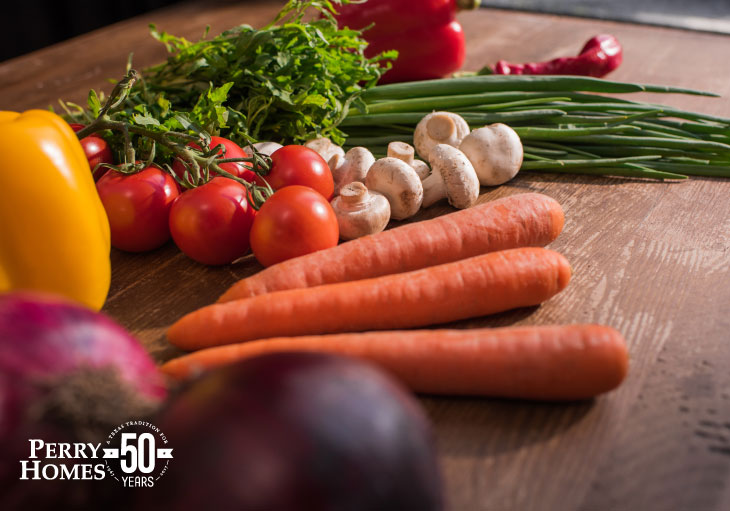
How to Start a Backyard Vegetable Garden
Building your own vegetable garden in the backyard offers you many benefits. Growing fresh vegetables are not only healthier, but can also save you lots of money on grocery shopping. When gardening for the first time, it is always best to start small and slow. We’ll give you ideas on how to get started so you don’t get overwhelmed and how to grow tasty, gorgeous vegetables you’ll love to eat.
Choosing a spot
Picking out a good plot to plant your vegetables is important to the growth and yield of your vegetables. Plant in a location that isn’t prone to flooding during heavy rain or doesn’t dry out during hot days. Since most vegetables need at least 6 hours of direct sunlight each day, you should also consider planting in a spot that gets a good amount of sunlight.
The type of soil you plant in plays a huge role in your vegetables’ growth. Most vegetables grow best in soft, moist soil. Adding compost to the soil can help enrich your soil by adding needed nutrients. The temperature of your soil is also a key element to ensuring a good yield. Warm soil will keep your vegetables disease- and pest-free. Keep a soil thermometer near your garden to help you keep track of the temperature.
Checking your soil
There are several different tests you can take to determine your soil type. To determine whether your soil has a lot of clods, feels powdery, or granular, dig a hole about 6 to 10 inches deep and run your fingers through it. If the soil contains different sized crumbs that hold when slight pressure is applied, you have the ideal soil type for gardening.
To test your soil for compaction, stick a thin wire flag into the ground in several areas. If the wire bends close to the tip, your soil is not easily penetrable and can hinder root growth and water circulation. You can test the pH of your soil by either buying a pH meter or doing it on your own. To test the pH on your own, take a cup’s worth of a sample of soil from different sections of your garden area. Take a portion of each sample and add 1/2 cup of vinegar to each portion and see if it starts fizzing. If you notice a reaction, then your soil is alkaline and has a pH between 7 and 8. If there is no reaction, then add distilled water until your soil becomes muddy. Then add 1/2 cup of baking soda. If there is a reaction to the baking soda, your soil is acidic and has a pH between 5 and 6. If there is still no reaction, your soil is neutral and has a pH of 7.

Deciding what to plant
The easiest plants to start with are tomatoes, peppers, carrots, cucumbers, lettuce, beets, and radishes. These vegetables require low maintenance and thrive well in most warm climates. Your soil’s pH can also help you determine which plants will thrive in your soil. Vegetables such as peas, broccoli, kale, potatoes, lettuce, onion, and spinach do well in acidic soil. Vegetables such as cabbage, lima beans, artichoke, asparagus, leeks, turnips, and brussel sprouts all do well in alkaline soil.
Raised beds
Raised beds are typically used in colder climates where soil freezes. Building a raised bed will help prevent soil compaction and pests from eating away at your vegetables. The walls also act as a barrier and keep your soil from being washed away during heavy rains. Because they are elevated above ground, raised beds are easier on the back and can make for a comfortable gardening experience. A good beginner size garden would be 11 inches tall and 4 feet wide. Anything wider than 4 feet will make it harder for you to reach the center of your garden. If you feel like you do have to step into the center of your garden, place a sturdy wooden plank going across your garden. This prevents you from stepping on the soil. Stepping on soil will reduce aeration and hinder root growth.
Sunken beds
Sunken beds are typically used in warmer, dry climates in southern and southwestern parts of the country. Once you’ve decided where you want to start your garden, remove the top soil. Top soil is typically 4-8 inches down from the top. After digging out the top soil, form trenches with the deeper soil. This is where you will sow your seeds. After you have planted your seeds, put the top soil back. For better results, mix the top soil with compost so you will have nutrient rich soil.
You don’t need to have a green thumb to have a successful vegetable garden. All you need is the willingness to put in a little time and effort as well as have the patience to watch your hard work pay off. Happy planting!
